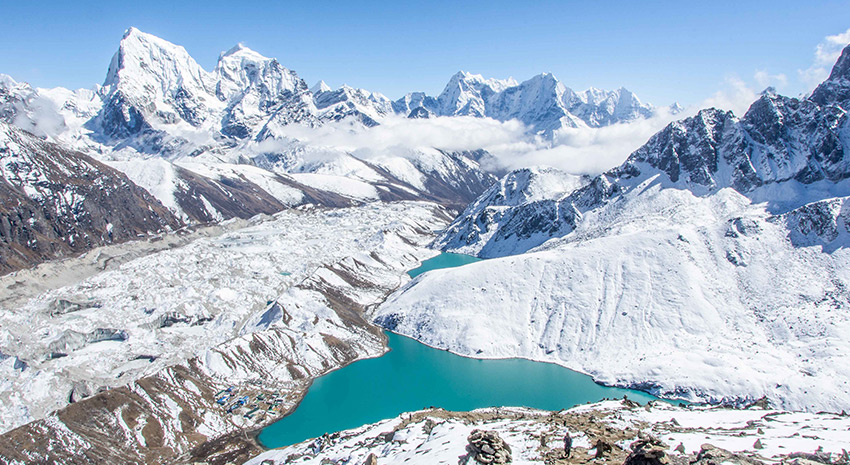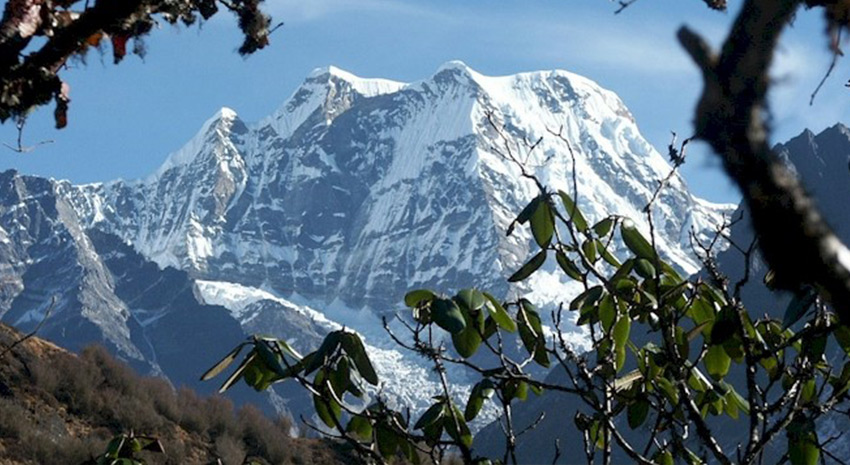
SMA is dedicated to making many remotes villages sustainable communities as well as doing valuable work protecting the natural environment or strengthening the social fabric, health and education of the local communities. If would like to be a part of this wonderful project, please contribute your generous donation through this page. Thank you so much for you kind support.
Anyone who enjoys an outdoor lifestyle and is in sound health (physically and mentally fit) can decide to travel to Nepal or take part in one of our trekking or mountaineering programs. However, some of our treks and expeditions are rigorous and difficult because of exposure to high altitudes. Therefore, a medical certificate of physical fitness and an acknowledgement that you will be exposed to altitudes above 4,500 meters (14,763 feet) may be required.
Any of our trekking and mountaineering itineraries can change because of unexpected natural causes, weather, area restriction, delayed flights or due to unforeseen circumstances that are beyond our control. Sherpa Mountain Adventure guides do their best to ensure that you have an enjoyable and active adventure despite any unforeseen changes.
Visa for entry into Nepal is provided by Nepalese Embassies and Consulates in your country for 30 days. This can be extended at an extra cost for up to a total of 90 days while in Nepal.
A trekking permit form will be sent to you for completion once you have booked a trek. This should be completed and returned with four recent passport size photographs.
To protect yourself against any unforeseen circumstances, we strongly recommend you to take out a “trip cancellation and medical insurance policy" in you home country. The medical policy should include coverage of transportation costs in the event of needing an emergency helicopter or surface evacuation. We regret that such insurance policies are not available for places like in Nepal, Tibet, Bhutan or Sikkim.

Nepal's official name is the Federal Democratic Republic of Nepal. It is home to Mt. Everest, the highest mountain on the planet. Nepal has the best Himalayan panoramic views. It has always lured visitors by its unparalleled natural beauty and rich cultural heritage. Located in South Asia, Nepal is a land-locked country by Tibet, China and India. Nepal has always remained a sovereign state throughout its history.
Despite being a land-locked country between India and China, Nepal is an oasis of geographic diversity including mountains,
rivers, tropical forests, plains, dessert and the home to many species of animals. Nepal's land ranges
from sea level to the top of world's highest mountain, Mt. Everest (known as Sagarmatha in Nepal)
which stands at 8,848 metres (29,029 feet). Nepal is 147,181 square kilometers (56,827 square miles),
making it the 93rd largest country in the world. Eighty percent of Nepal is occupied by the Himalayan
peaks.
Nepal can be divided into three geographical areas - the Himalayan Mountain Region, the Pahadi
(the hill region or foothills) and the Terai (the lowland plains). The northernmost section is the Himalayan
Mountain Region which borders China and contains Mt. Everest along with numerous other high mountain
peaks. Sherpas are from this section of Nepal. The Pahari region, or foothills, is highly populated with
valleys and ranges from 800-4,000 metres high (2,600-13,125 feet). This region is home to a wide range
of ethnic groups and cultures. The Mahabharat Lekh, at the southernmost part of the Pahadi region, is
considered subtropical (at 1,500-3,00 metres). The southernmost region of Nepal is the Terai, which borders
India and is part of the Indo-Gangetic plains and is fed by the three major Himalayn Rivers - the Karnali,
Naravani, and Kosi. This region has a subtropical to tropical climate. There is a lot of farming in this
region of Nepal due to the weather.
The Himalayan green valleys, mid hills and Terai plains
make Nepal one of the most diversely rich countries in the world. 19.7% of the total area of the country
of Nepal is covered by protected areas that include nine national parks, three wildlife reserves, one
hunting reserve, three conservation areas and eleven buffer zones. Among these, Sagarmatha National Parks
in the Himalayas and Chitwan National Park in Terai are the world heritage areas.
Nepal opened its doors to the foreigners in 1949 when Himalayan mountaineering expeditions were first allowed. Nepal gained
global notice with the successful ascent of Annapurna (8,091m) and Maurice Herzog and Louis Lachaenal
in 1950 as well as from the successful ascent of Mt Everest (8,848m - the highest peak in Earth) by Sir
Edmund Hillary and Tenzing Norgey Sherpa in 1953.
The period from 1950-1960
is termed as the golden era of climbing in the Himalayas when all of the highest 8,000 meter peaks were
climbed. The account of the early mountaineers and explorers caught world attention and soon tourism
started flourishing in Nepal. Initially it was the trekkers who followed the trails pioneered by the
early mountaineers.
Nepal offers a wide variety of outdoor adventure including:
Trekking
Climbing
Sightseeing
Religious Pilgrimages
Mountain Flying
Rafting
Famous National Park
Large Variety of Wildlife
Diverse Cultures & Religions
Nepal's 23 million inhabitants belong to dozens of different ethnic groups. They can be divided roughly into Hindu peoples
(who live mainly in the lowlands) and Buddhists, who live in the mountain villages close to Tibet. Hindus,
who make up 90 percent of the population, dominate political and religious life. Buddhism has a special
connection to Nepal. Siddhartha Gautama, who was later revered as the Buddha, was born in the Terai in
543 BC. Perhaps the most well-known Buddhist ethnic group are the Sherpa, who have long been associated
with Himalayan mountaineering expeditions. The vast majority of Nepal's population makes a living from
agriculture.
Later, foreigners fascinated by the accounts of great cultural
and geographical diverse people with varied interests started choosing Nepal for a holiday destination.
The highest mountain in the world, thundering Kathmandu Valley, Lumbini's birth place of Lord Buddha
and Pokhara (the lake city) and Chitwan National Park are the most popular tourist places. Nepal is quickly
emerging as a great holiday destination. The warm hospitality of the Nepalese people has drawn praises
from visitors across the globe.
Nepal offers visitors a wide range of experiences in different
parts of the country in a safe and quality manner.
While there is evidence that Nepal was inhabited in prehistoric times, there has been little archeological research on early
indigenous people. In the 8th century BC, migrants from India settled in the region of Kathmandu. Indian
influence in the region was further consolidated by the Licchavi Dynasty (300-900 AM), who introduced
Hindu traditions and culture (including the caste system). By the 13th century, three kingdoms all under
the control of the Malla Dynasty, dominated the Kathmandu Valley. Over the next five hundred years, the
Malla rulers proved to be important patrons of the arts, building elaborately-decorated temples and palaces
that survive to this day. Throughout the centuries, Nepal's topography protected the country from outside
invaders. The Himalayas provided an impenetrable boundary to the north, while endemic malaria in the
Terai kept out attacks from the south.
Nepal's kingdoms were unified in
1769 by Prithvi Narayan Shah, an ancestor of Nepal's present-day king. Inspired by India's independence,
a nationalist movement grew in Nepal in the 1940's, but the king remained in control of the country.
It was not until 1991 that a new constitution was introduced and multiparty elections were held for the
first time.
There are numerous ancient temples, shrines, and hidden cities for you to explore in Nepal. We take trekkers to the ancient kingdom of Mustang, a city hidden kingdom only recently opened to the world. The Kingdom of Mustang rests on the border of China in Nepal. Tightly sealed off from the outside world until 1992, the tiny kingdom of Mustang was preserved within its boundaries, a culture and a way of life that has changed little over the centuries. Still presided over by its hereditary dynasty, this unique kingdom-within-a-kingdom has ancient Tibetan Buddhist monasteries (that predate any monasteries within Tibet) and a well preserved Tibetan Buddhism which has thrived with little influence from the outside world. In fact, it is said by many that there is more of Tibet in Mustang than in there is in today's Tibet. On top of all of this, the trekking in Mustang's territory is fabulous, and only moderately difficult. This is truly a connoisseur's trek. No matter where you decide to go in Nepal, you are sure to find friendly people, fascinating culture and see wondrous sights!